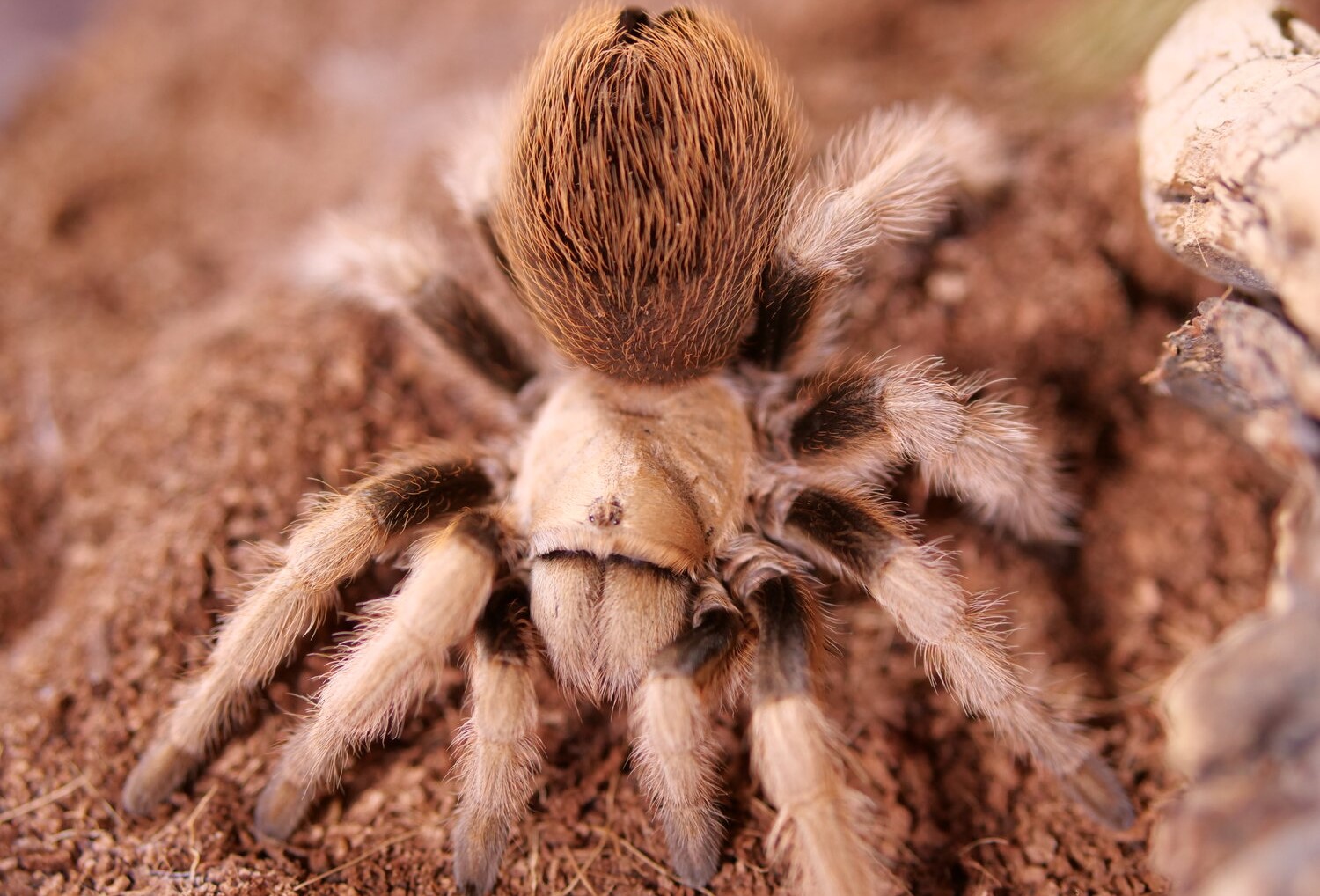
The Desert Blonde Tarantula, also known as Aphonopelma chalcodes, is a fascinating creature that inhabits the arid regions of North America. With its vibrant golden coloring and unique personality traits, this tarantula has captivated the attention of animal enthusiasts and researchers alike. In this article, we will delve into 19 astounding facts about the Desert Blonde Tarantula, shedding light on its habitat, behavior, diet, and more. From its impressive size to its intricate web-spinning abilities, this arachnid is truly a remarkable member of the animal kingdom. So, let’s embark on a journey to discover the incredible world of the Desert Blonde Tarantula and uncover the secrets that lie within this arid-dwelling arachnid.
Key Takeaways:
- The Desert Blonde Tarantula, native to the southwestern United States, is a fascinating creature with a docile nature, impressive size, and a crucial role in balancing desert ecosystems.
- With their ability to regenerate lost limbs, unique shedding method, and importance as predators, Desert Blonde Tarantulas are captivating pets for enthusiasts, requiring proper care and understanding of their needs.
The Desert Blonde Tarantula is native to the southwestern United States.
These fascinating creatures can be found in the arid regions of Arizona, New Mexico, and parts of Texas. With their sandy-colored bodies, they blend seamlessly into their desert habitats, making them difficult to spot.
They are also known as the “Arizona Blonde” tarantula.
This common name is derived from their natural habitat and the striking blonde coloration of their hairs. The Desert Blonde Tarantula is known for its docile nature, making it a popular choice among tarantula enthusiasts.
Desert Blonde Tarantulas have a leg span of up to 5 inches.
These spiders are relatively large, with males averaging around 4 inches and females reaching up to 5 inches in leg span. Their impressive size makes them a noticeable presence in the desert ecosystem.
They are opportunistic predators.
The diet of the Desert Blonde Tarantula primarily consists of insects, such as grasshoppers, beetles, and other small arthropods. They are excellent hunters and use their powerful fangs to inject venom into their prey, immobilizing them before consuming.
These tarantulas have a lifespan of up to 20 years.
With proper care and favorable conditions, Desert Blonde Tarantulas can live for two decades or more. Their long lifespan makes them an intriguing species to observe and care for.
Desert Blonde Tarantulas are nocturnal.
These tarantulas are most active during the night when they venture out of their burrows to search for prey. They have specialized hairs on their bodies that allow them to detect vibrations and movements in the dark.
They are excellent diggers.
Desert Blonde Tarantulas create burrows in the desert soil, where they spend most of their time. These burrows provide protection from predators and extreme weather conditions, as well as serve as a safe space to molt and lay eggs.
Female Desert Blonde Tarantulas are larger than males.
It is common for female Desert Blonde Tarantulas to be larger in size compared to males. This sexual dimorphism is often observed in many spider species, with females being more robust to accommodate egg-laying and breeding.
Males perform elaborate courtship rituals.
In their quest to attract a female mate, male Desert Blonde Tarantulas engage in intricate courtship displays. They use leg vibrations, abdominal movements, and visual cues to communicate their availability and intentions to the females.
Desert Blonde Tarantulas have venomous fangs.
Like most tarantulas, the Desert Blonde Tarantulas possess venomous fangs that they use primarily for subduing prey. While their venom is not considered dangerous to humans, individuals may still experience pain and discomfort if bitten.
They have specialized hairs for defense.
The Desert Blonde Tarantulas have “urticating” hairs on their abdomens, which they will kick off as a defense mechanism when threatened. These tiny hairs can cause irritation and discomfort if they come into contact with the skin or eyes.
They molt to grow and regenerate tissue.
As with other arachnids, Desert Blonde Tarantulas undergo molting to shed their old exoskeletons and allow for growth. During this process, they become vulnerable and will seek shelter until their new exoskeleton hardens.
Desert Blonde Tarantulas are solitary creatures.
These tarantulas prefer a solitary lifestyle and typically only interact with other tarantulas during breeding season. They are solitary hunters and do not exhibit social behaviors commonly seen in other insects or arachnids.
They have tiny, claw-like hairs on their legs.
The Desert Blonde Tarantulas have specialized hairs on their legs that resemble tiny claws. These hairs help them grip onto surfaces and assist in climbing, allowing them to navigate their surroundings with precision.
They possess a unique ability to regenerate lost limbs.
If a Desert Blonde Tarantula loses a leg due to predation or an accident, it has the remarkable ability to regenerate the limb through a process called autotomy. Although the regenerated leg may not be as fully formed as the original, it still enables the tarantula to function effectively.
Female Desert Blonde Tarantulas can produce hundreds of eggs.
During mating season, female Desert Blonde Tarantulas can lay hundreds of eggs in a specially constructed egg sac. The female diligently guards the sac until the spiderlings hatch, after which they disperse to start their independent lives.
They have a unique method of shedding hairs.
Unlike other tarantulas, the Desert Blonde Tarantulas utilize a flicking motion to rid themselves of excess urticating hairs. They vigorously rub their abdomens against their hind legs, causing the hairs to dislodge and scatter in the surrounding area.
They play a crucial role in balancing ecosystems.
Desert Blonde Tarantulas are important predators within their habitats, regulating the population of various insects and contributing to the overall balance of the ecosystem. Their presence helps to control pest populations and maintain the health of the desert ecosystem.
They are a popular choice as pets among tarantula enthusiasts.
Due to their docile nature and captivating appearance, Desert Blonde Tarantulas are sought after as pets by tarantula enthusiasts and collectors. Proper care and understanding of their needs are essential to ensure their well-being in captivity.
Conclusion
The Desert Blonde Tarantula is truly an extraordinary creature. Its unique characteristics, intriguing behavior, and fascinating adaptations make it a captivating subject of study and admiration. From its ability to survive in harsh desert environments to its impressive hunting techniques, this tarantula continues to amaze researchers and enthusiasts alike.
By shedding light on these 19 astounding facts about the Desert Blonde Tarantula, we hope to have increased your appreciation for this incredible arachnid. Whether you encounter one in the wild or admire it from a distance, remember to respect its space and importance in maintaining the delicate balance of desert ecosystems.
So, the next time you come across a Desert Blonde Tarantula, take a moment to admire its beauty, resilience, and unique characteristics. It truly is a marvel of the animal kingdom.
FAQs
Q: What is the lifespan of a Desert Blonde Tarantula?
A: The lifespan of a Desert Blonde Tarantula can range from 10 to 25 years, depending on factors such as gender, habitat conditions, and care.
Q: Are Desert Blonde Tarantulas venomous?
A: Yes, Desert Blonde Tarantulas possess venom, although their bite is not considered dangerous to humans. Their venom is primarily used to subdue prey.
Q: What do Desert Blonde Tarantulas eat?
A: Their diet consists mainly of insects, such as crickets, grasshoppers, and beetles. They are opportunistic hunters and will also consume small vertebrates if available.
Q: Are Desert Blonde Tarantulas aggressive?
A: Desert Blonde Tarantulas are generally docile, but they may display defensive behavior if they feel threatened. It is best to avoid handling them to prevent stress or accidental bites.
Q: Can Desert Blonde Tarantulas live in captivity?
A: Yes, they can be kept as pets in suitable enclosures with proper temperature, humidity, and feeding conditions. However, it is important to research and understand their specific care requirements before keeping them.
Was this page helpful?
Our commitment to delivering trustworthy and engaging content is at the heart of what we do. Each fact on our site is contributed by real users like you, bringing a wealth of diverse insights and information. To ensure the highest standards of accuracy and reliability, our dedicated editors meticulously review each submission. This process guarantees that the facts we share are not only fascinating but also credible. Trust in our commitment to quality and authenticity as you explore and learn with us.


